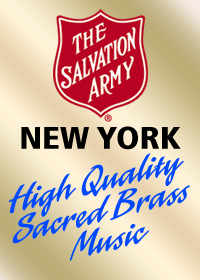Book: The Art of Practice
A self-help guide for music studentsBy Howard Snell

Saxophonist, composer and educator, Andy Scott reviews a book from one of the master trumpet players and educators of our time - Howard Snell
I was intrigued when approached to write this review; a book written by Howard Snell, a fine musician who seems to have a saint-like status given by many of those involved in the world of brass bands, and someone who is a deep thinker, hugely musical and able to articulate his musical thoughts in a way that communicates in a direct and unfussy manner. He’s no fool, he knows his position in the world of music, and rightly so with sixty years experience as a professional musician.
The cover of The Art of Practice states; master the basics, master yourself and master your instrument. Divided into two parts, Clearing the Ground and Practice, the 137 pages of this soft back edition give us an opportunity to read and digest Howard’s thoughts about how one can take responsibility as a musician, develop the art of listening, self-evaluation, time management and structure in terms of practice. By articulating these thoughts in detail and on paper, I found that it made me think, assess and evaluate, and left me with an overall feeling of being inspired. It also left me feeling that the invaluable information that is imparted in every page of The Art of Practice would benefit every student of music, regardless of age.
As many reading this will already know, Howard was principal trumpet with the London Symphony Orchestra for a number of years, and went on to establish himself as a well travelled conductor, and greatly admired teacher, arranger and composer, which he continues to do to this day. One particular statement from The Art of Practice that really resonated with me is when Howard states that when teaching as a non-player, that “my approach to teaching quickly began to change: I began to focus totally on the student”. This may seem obvious to some, but this is a hugely refreshing admission, without ego and insecurity, and we now have a musical guide, someone that gives us the benefit of his years of musical experience, at a very high level.
Clearing the Ground offers detailed thoughts about sound, listening, learning, concentration, intonation, articulation, melodic phrasing, time and rhythm, interpretation and much more, whilst Practice offers a selection of detailed thoughts about approaches to time management, recognition of musical challenges, finding creative practical solutions to these challenges, in addition to invaluable statements regarding our philosophical and emotional frame of mind when playing our instrument (or voice). Thoughts about practicing away from your instrument, visualisation, auralisation and vocalisation also highlight the creative thinking that Howard offers the reader.
To go into more detail in this review with a chapter by chapter blow by blow is I feel missing the point. I have read The Art of Practice several times and am now at a stage where I feel that I can take a step back and look at what is happening here. For any musician that is serious about their music who is reading this review, it is simple, for less than £10 you can be the owner of a mine of invaluable musical information. The Art of Practice is a book that you may well refer to for years to come, providing musical inspiration when required, all explained clearly and logically. It will make you think, question, and be a more creative musician, one that recognises the balance between music itself and playing a musical instrument.
I will recommend to the saxophone and composition students that I teach at the Royal Northern College of Music, the college where brass students had the benefit of Howard’s knowledge for many years, that they each buy a copy of The Art of Practice. Saint Howard indeed.
Read more reviews and much more by subscribing to BBW Digital here.





.gif)







